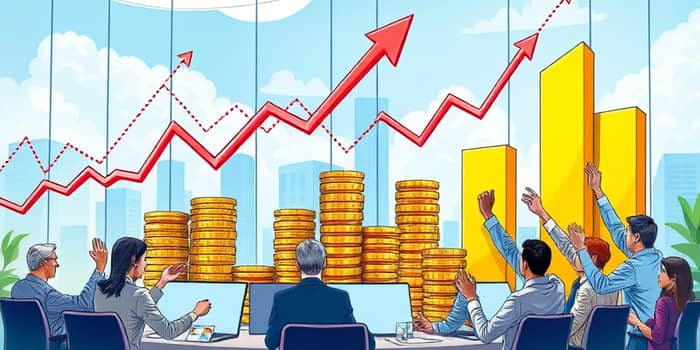
Share repurchases have reshaped how companies allocate capital and reward investors in the 21st century.
A share buyback, also known as a stock repurchase, occurs when a company uses excess cash reserves to reacquire its own shares.
Once repurchased, these shares can be either retired—reducing the total share count—or held as treasury stock for potential reissuance.
Repurchases come in several forms:
Executives deploy repurchases for strategic, financial, and signaling reasons.
Key motivations include:
Reducing outstanding shares has a direct effect on earnings per share (EPS), return on equity (ROE), and other per-share ratios.
For example, a firm with $50 million in net income and 100 million shares repurchasing 10 million shares at $10 each decreases its share count to 90 million. The EPS jumps from $0.50 to $0.56, and if the price-to-earnings (P/E) ratio remains at 20, the stock price may rise from $10 to $11.20—yielding a short-term stock price boost of 12% purely from repurchasing activity.
When buybacks are financed with debt, accelerated EPS growth can follow. A 10% share reduction funded by borrowing can lift EPS by 3.4% in year one and up to 11% in year two, assuming stable net income.
Shareholder yield encompasses dividends plus buybacks, providing a holistic view of cash returned to investors.
Studies of the Russell 3000 demonstrate that the top quintile of companies by combined yield outperforms the dividend-only top quintile in total return, highlighting the long-term shareholder value creation driven by repurchase programs.
Compared to dividends, buybacks offer capital gains tax treatment, which often carries lower rates and allows investors to defer taxes until shares are sold.
This advantage makes repurchases a more tax-efficient vehicle for returning cash, especially for high-net-worth individuals seeking to manage their tax liabilities.
Furthermore, buybacks are not subject to the stigma of dividend cuts. Firms can adjust repurchase levels annually, enabling management to respond to market conditions and valuation opportunities.
Despite popularity, share repurchases face criticism for potential drawbacks:
Debt-financed repurchases elevate financial leverage, increasing vulnerability during downturns. Moreover, policymakers debate restricting buybacks, citing concerns over misallocation of corporate capital and economic inequality.
Historical data shows that buyback activity has contributed significantly to index performance. A stock that continuously repurchased shares over decades would have achieved valuations nearly 90% higher than peers relying solely on profit growth.
Consider a hypothetical firm that repurchased 5% of its shares annually at an average P/E multiple of 15. Over ten years, the cumulative effect on EPS and market capitalization can exceed the impact of maintaining those funds in cash.
Comparing repurchases to dividends highlights trade-offs for both corporations and investors.
For corporate leaders, executing repurchases at attractive valuations is paramount. Key considerations include:
Investors evaluating buyback announcements should consider the company’s debt levels, underlying growth prospects, and alternative uses of capital.
Share buybacks remain a potent tool for companies to enhance per-share metrics and return capital.
When deployed judiciously, repurchases can signal management confidence, improve shareholder yield, and deliver sustainable wealth creation over time.
However, balancing repurchases with investments in growth and managing debt risk ensures that buybacks serve long-term strategic goals rather than short-term stock boosts.
References













